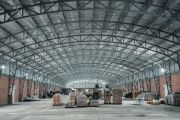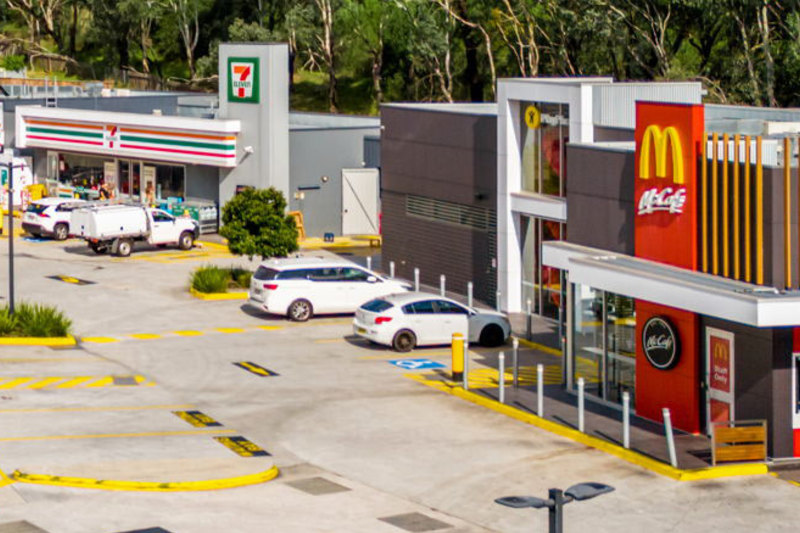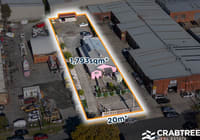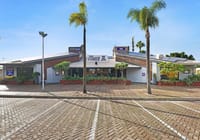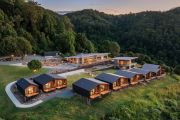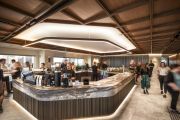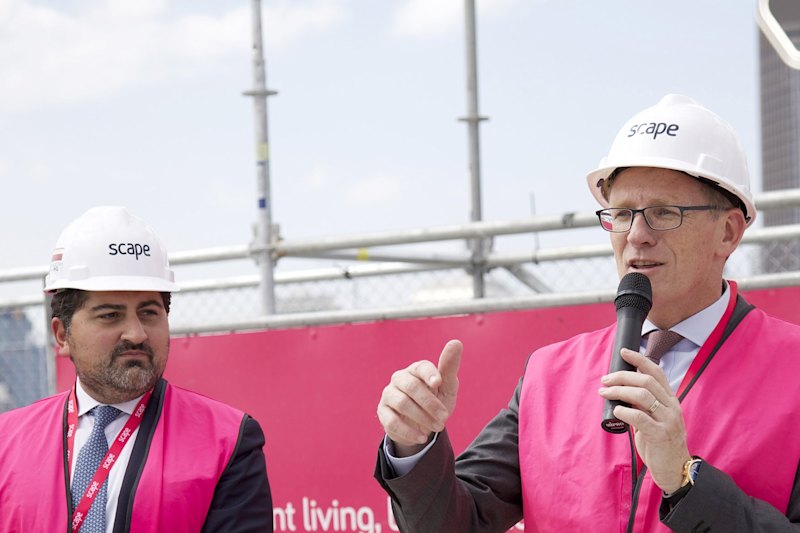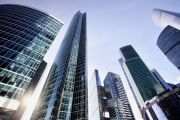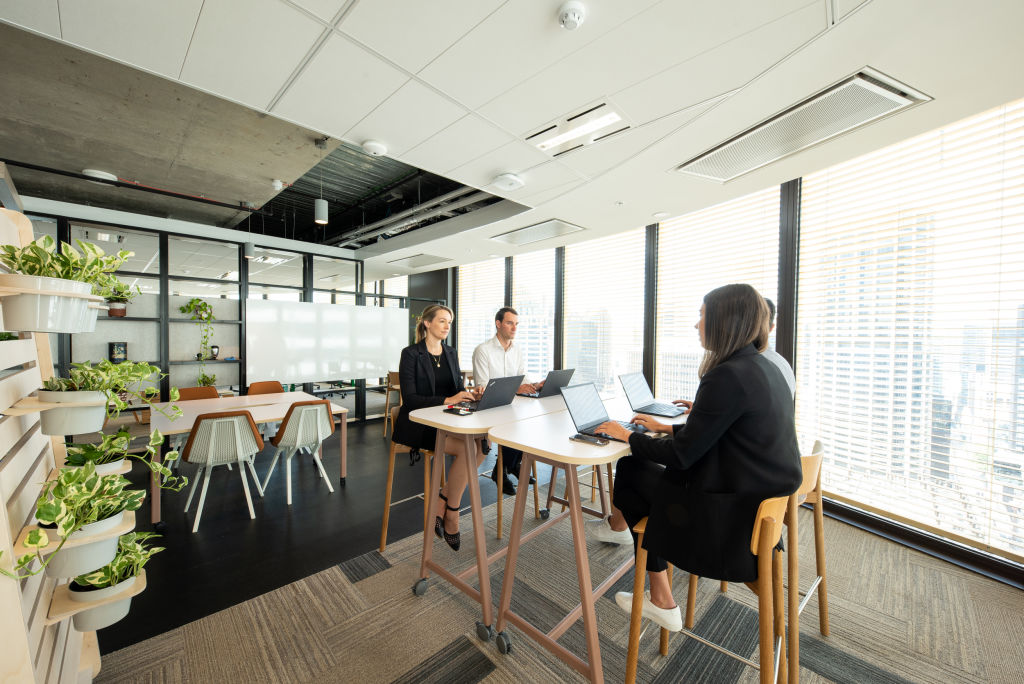
Desks on wheels and Taco Tuesdays part of Mirvac's office of the future
What will the workplace of the future look like?
In a bold experiment to try to predict exactly that, developer Mirvac has fitted out part of its Sydney HQ to reflect the hopes, dreams, desires and even vague ruminations of many of its customers, development partners and employees.
And the vision they’ve come up with is reassuringly simple: big open-plan spaces with all moving parts, including desks and tables on wheels, mobile space dividers that be easily relocated, and access to power and the cloud everywhere, from drop-down daisy-chain connections in the ceiling to portable power units.
“The world has changed post-COVID, and work is going to look fundamentally different,” said Campbell Hanan, head of Mirvac’s integrated investment portfolio. “Workplaces have changed from a place of work to somewhere to have experiences; to collaborate, innovate, learn and socialise, all things you can’t do at home.”
The company’s 1300-square-metre ‘adaptive workplace’ pilot demonstrates exactly how they feel work will look as businesses battle to attract workers back to the office, whether that might be for part of the week, for a few hours each day here and there, or for special meetings and events. Making it as inviting as possible will also, they believe, play a major role in helping attract and retain the best talent.
Gone are individual offices, permanent desks, monitors and mice at each station and large lockers. In their place are large, bright, airy floor plans with views from everywhere out of the full-length windows and desks that anyone can come in and sit at – from the chief executive to the intern – and plug in their laptops to start work.
“We don’t claim to have all the answers, but this can play an integral role in finding them,” said Paul Edwards, Mirvac’s general manager of strategy and customer. “We’re providing a platform of spaces for our customers and then seeing how they’re using them.
“In the future, people might work one, two or three days in the office in a change that’s been coming for a while. Now, the future office will be about experiences, and that could be corporate, inspiring or about learning, and about working with cloud-based technology to get the best out of people.”
In the pilot, there are different spaces for different kinds of work. There are large areas with big groupings of desks for big meetings, smaller ones for smaller gatherings, and high seating, desk-type level seating and low lounge groupings.
There are quiet spaces, with wallpaper showing the spines of books to encourage library-like hush, and meditation pods, and even a modern sound-proof variation of the old phone box where people can have loud conversations – or arguments – without anyone overhearing or being disturbed.
And a highlight are social spaces for people to get together casually, or bump into each other, with regular special events, like Taco Tuesday.
Mirvac is cycling their own staff through the experimental workplace, designed in partnership with architects Davenport Campbell and technology provider XY Sense, to test how each aspect functions. Different furniture designers were also brought on board.
All the time, constant monitoring is taking place through technology hubs placed in the ceiling to record – albeit anonymously – the movements of staff to track which spaces are the most popular, and which are the least used. Any that don’t function well can then be easily changed into something different to make the office as adaptive as possible to any other changes yet to come.
“We never know what the future might hold, and maybe computers will even disappear,” said Mr Edwards. “You could plug your phone into a screen and that becomes a desktop. So, we need to make the workplace flexible enough to take account of any change.
“How we think of value might change, too. We’ve always thought of price per square metres, or the number of people who can fit into a space. But now the value in future might be about experiences, and how it supports staff to work in ways that most suit them.”
The pilot will run over six months to a year to assess how well the design, layout and settings work by tracking their use. There is also psychological testing of features like stress levels going into the meditation pods and coming back out of them.
Sean Willcock of Davenport Campbell said the new design had to cater for every type of worker in the new post-pandemic hybrid world, like those who are office-based, hybrid, in/out, site-based or the “freedom” worker.
“We had to understand the type of places we needed to create,” he said. “It was a kit of parts that are all flexible and adaptable. The old office had 42 per cent of the space as individual areas, whereas this has just 18 per cent, there’s team space and there is now twice as much space for collaborative uses, while we also have a hospitality floor.”
An informal survey of top client partners asked them about their biggest workplace challenges. They said their difficulties were that no one has the answers. They’re having to rethink the purpose of the office, they’re under pressure to downsize, they’re not sure how to manage a hybrid workforce, and they need to simplify workflows so the office is as easy to work from as home.
Even the most traditionally-minded firms are now looking at future workplace models as, with the competition for the best talent, they’re having to change their ways of working to make their offices more attractive, Mr Edwards said.
At the Property Council of Australia, NSW deputy executive director Lauren Conceicao, also examining the pilot workspace, says it demonstrates how different the office will need to be in the future from home-working.
“It shows how valuable offices are for collaboration, engagement and providing the facilities and services you can’t get access to at home,” she said. “All office owners are now thinking about how to best mix the spaces to deliver value to clients.
“There was a lot of commentary and predictions through the pandemic to say the office is dead. But now we’re seeing the opposite. People are valuing office space and expanding it and doing things in a way they’ve never been done before.”
